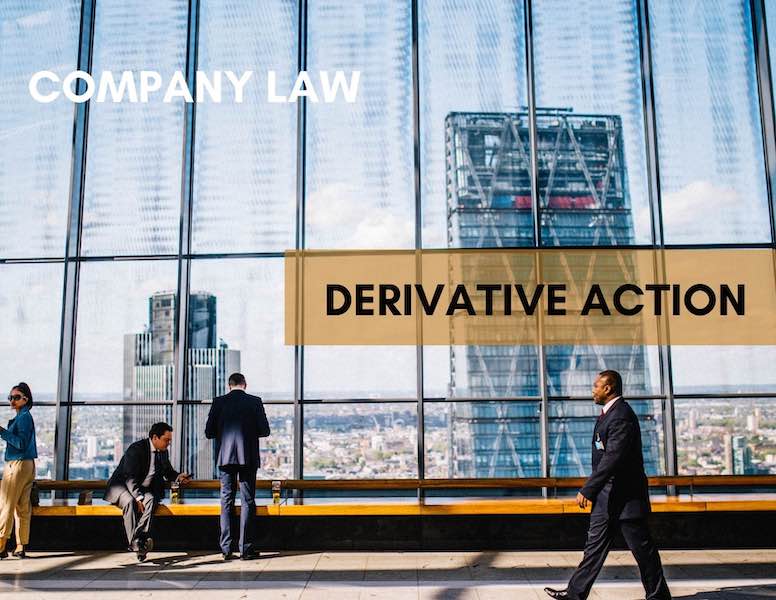The Corporate Vigilante: How Can I Take Legal Action for Wrongdoings Committed Against A Company?
by Ivan Aaron Francis ~ 21 January 2021
Introduction
I remember what was taught in my first class of Company Law – separate legal personality. This idea that a Company albeit controlled and managed by humans remained as a distinct entity. I was genuinely fascinated at our Soloman defeated the allegations of the liquidator to reclaim the remainder of the company’s assets on the basis of the debentures issued to himself.
A company moves according to what its Board decides. Internal management of a company differs widely and the Courts have made it clear that it will not meddle with the internal management of a company.
Companies, like every other entity, is liable to suffer damage and loss. The question arises as to what happens when the Board fails or neglects to seek recourse when a company suffers such damage?
What more when the damage and loss caused to the company are caused by the very hands that manage it?
Can a minority shareholder or director sue for such damage caused?
The Beginning: The rules in Foss v Harbottle
In the case of Foss v Harbottle, two minority shareholders attempted to sue five directors claiming that the Company’s property had been misappropriated, wasted and improperly disposed of.
Wigram VC dismissed the claim and held that when a company is wronged by its directors it is only the company that has standing to sue as the company is a separate entity from its shareholders. This is known as the “proper plaintiff rule”.
Secondly, the Court will not interfere with the internal management of a company so long as a majority of members can ratify the act (unless illegal acts, fraud on the minority shareholders, etc are involved). This is known as the “majority rule principle”.
The exceptions to these rules include illegality, invasion of individual rights, actions requiring special majority and “frauds on the minority”.
As a result of the Foss v Harbottle rules, Common Law Derivative Action took form to allow minority shareholders take legal action on behalf of the company but required 1) fraud upon the minority; and 2) wrongdoer control.
A complainant must show that the majority in control of the company had abused the powers vested in them or had omitted to conduct the company appropriately in light of a collateral motive or reason.
One aspect of “control” may be reflected in terms of shareholding of the company, but the Court can also go behind shareholdings and look at whether the alleged wrongdoers were, by virtue of their position, in fact, in control so as to prevent the company from taking action.
Legal Position in Malaysia
The Malaysian legal system like many others has implemented, through statute, various corporate recourse one might take when faced with such issues. Statutory derivative action was first enacted in the Companies Act, 1965.
The 2016 Act, however, though substantially to the 1965 enactment, had abolished the applicability of Common Law Derivative Action in the Malaysian scene.
As we will go through shortly, you will see that the present statutory framework for derivative actions is far less stringent and limited compared to its common law counterpart which is still applicable in various jurisdictions.
In fact, the Companies Act 2016 (“CA 2016“) does not limit derivative actions to “minority shareholders”, but has generally included the following class of people as permissible “complainants”:-
- A member of the company, or a person entitled to be registered as a member;
- A former member of the company, if the application relates to circumstances wherein such member ceased to be a member;
- Any director of the company; or
- The Registrar, where the Company’s affairs is being investigated under S.590.
There are two stages when taking statutory derivative action – (i) the leave stage, and (ii) the action stage.
Before one may take derivative action, leave of Court must be procured pursuant to S. 347 and S.348 of the CA 2016. And before one may apply for such leave, a 30-day prior notice in writing must be given to the directors of the company. There is no prescribed form for such notice as the notice need only to state of the complainant’s intention to apply for leave. The purpose of the notice is to give an opportunity to the directors of the Company to consider, respond and/or accede to the request of the complainant.
After the 30 days have lapsed, the complainant may make an application by originating summons, supported by an affidavit, for leave of Court pursuant to S.347 and S.348 of CA 2016. In deciding whether leave ought to be granted, the Court shall consider two things:- (i) whether the complainant is acting in good faith; and (ii) whether it appears prima facie that it is in the best interest of the company for leave to be granted.
In respect of “good faith”, the test is two-fold.
Firstly, there must be an honest belief on the complainant’s part. Secondly, the application must not be brought for a collateral purpose.
In respect of “prima facie it is in the best interest of the company for leave to be granted”, the Courts have considered one possible method is by ascertaining if the company stands to gain substantially from the action and whether the company has genuine commercial considerations for not wanting to pursue such action.
This is important to note because derivative action may not be the best solution in respect of a minor dispute with a long-standing customer or supplier. It is not unusual for a company to treat certain creditors, suppliers, customers, etc. differently from the others due to various factors like history, business prospects, profitability, relationship, loyalty and the likes.
The Court also considers if alternative remedies to derivative action are available. For example, if a company was not performing financially well, a possible solution is to wind up the company on just and equitable grounds instead of one shareholder attempting to take action against another through the company.
In Salina Bt Muhamad Sukor v MVD International Sdn Bhd & Anor [2019] 9 MLJ 762, the Plaintiff (“Salina”) filed an application for leave to commence derivative action as a director and shareholder of the first Defendant (“MVD”) against a third party company, the second Defendant – the Company Director (“D2”) and D2’s wife. MVD was a licensed private agency, where Salina was a nominee of MVD’s CEO. Salina complained that D2 and his wife had set up the third party company in competition with MVD, and operated its business using MVD’s license and premises without the knowledge of MVD’s directors or shareholders. The Court here allowed the application for leave, finding that all requirements were complied with.
In Lim Pey Yeng v Christopher Yee Weng Chee & Anor [2019] 1 LNS 137, The Plaintiff (“Lim”) sought leave to commence derivative action against the first Defendant (“D1”) and second Defendant (“D2”), on behalf of the third Defendant (“D3”) for causing financial instability to D3 through various alleged conduct. Here, Lim and D1 were in a relationship and D1 had set up D2, a company closely located to D3. In 2017, D1 and Lim signed an agreement to cease D3’s operation, hoping to find a third party to take over its business, but they failed to do so and D3 continued to operate under financial pressure. This eventually led to Lim and D1 splitting.
The Court here dismissed the application upon finding that Lim’s application had collateral purpose and was not in D3’s best interest since it will incur more legal cost. Instead, the Court suggested that D3 ought to be wound up on just and equitable grounds in light of the complete breakdown of trust and understanding between Lim and D1.
On top of granting leave, the Court is also armed with the following additional powers:-
- Authorize the complainant or any other person to control the conduct of the proceedings;
- Give directions for the conduct of proceedings;
- For any person to provide assistance and information to the complainant, including to allow inspection of company’s books;
- Requiring the company to pay reasonable legal fees and disbursement incurred by the complainant in connection with the action; and
- Give orders as to costs of the complainant, the company or any other person for proceedings to be taken, including indemnity for costs.
The “action” stage is whereupon leave is granted, the complainant may proceed to initiate, intervene or defend any action in the company’s name. If the complainant intends to initiate proceedings, they must do so within 30 days from the date leave is granted. If any such proceedings brought, intervened or defended is to be settled or compromised, it cannot do so without leave of Court. It should also be highlighted that statutory derivative action is limited to civil court proceedings as there is no wording to suggest arbitration/adjudication or other alternative dispute resolutions may be initiated.
Conclusion
All in all, derivative action is a very useful corporate tool available to those who lack management control but want legal recourse. However, it is not the recommended solution if you have solely suffered personal loss or damage. I heed this especially to shareholders, whose only loss or damage (usually) is the diminution of share value or loss of dividends, which are the results of damage caused to the company.
Derivative actions are just another form of representative action put in place to enable the function of justice and legal redress. In fact, double or multiple derivative actions are also allowed and applicable in Malaysia, but we will discuss the functionality of such in the article to come.

